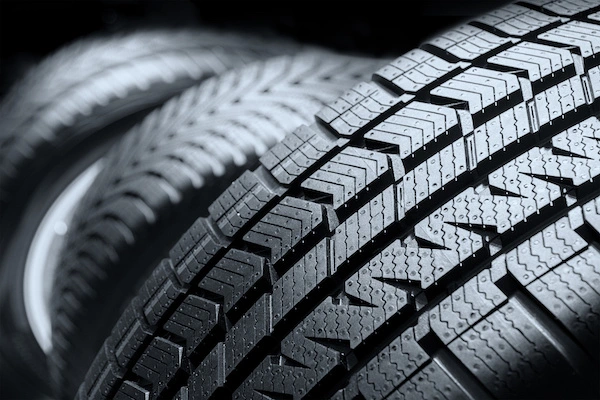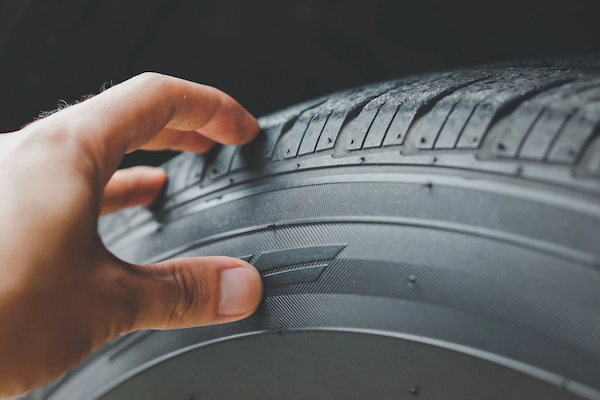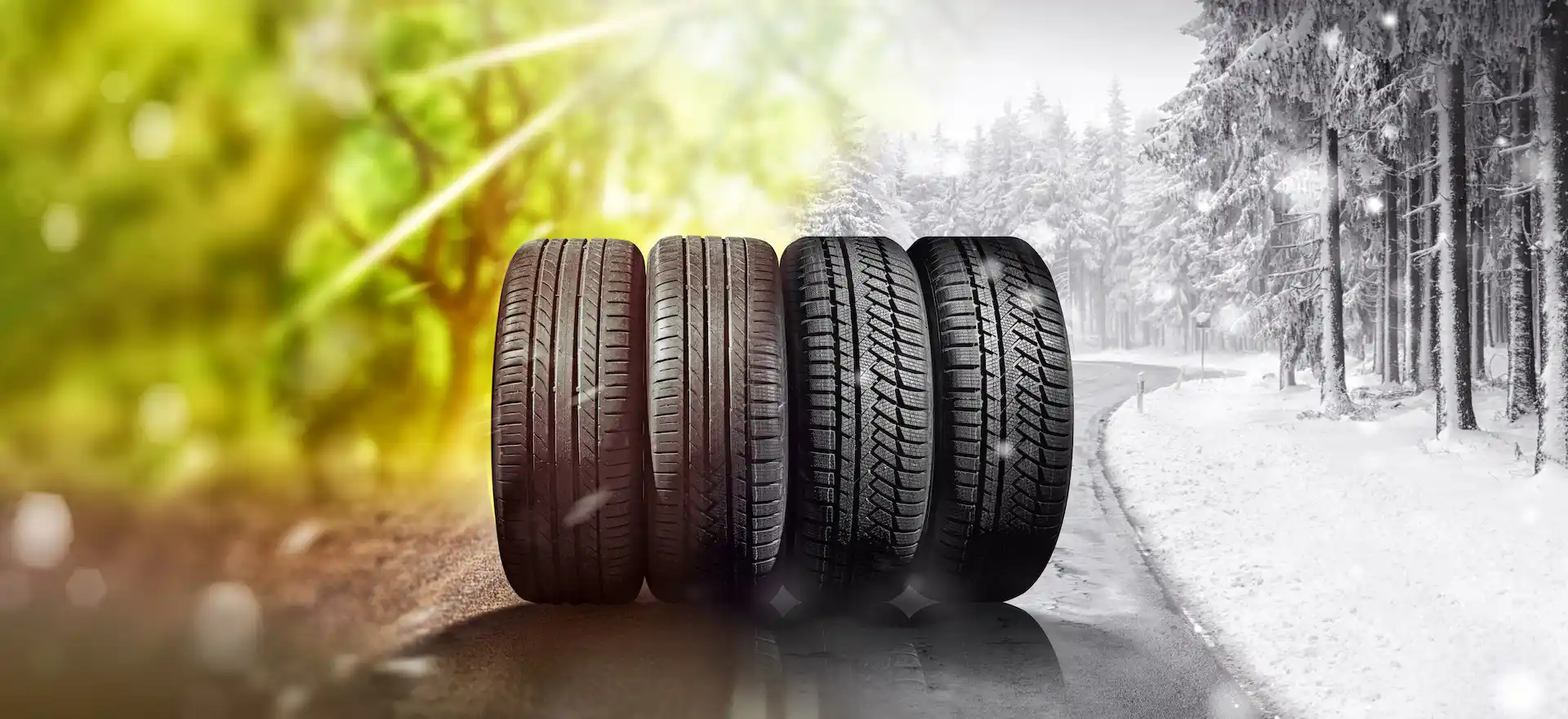The Difference Between Summer & Winter Tyres
Published on: Monday, 13 November 2023 | Author: Jack Dreyer
The importance of your tyres doesn’t need too much of a preamble: they’re your main point of contact with the road and can be the difference between a comfortable ride to the shop and a potentially fatal accident. You likely already know about regularly checking your tyre pressure and tread depth, but you may not know the difference between summer and winter tyres.
Read on to find out.
What is tread pattern?
A tyre’s tread pattern is the pattern of grooves on the face of the tyre. These grooves exist to maintain grip on the road while also displacing water and small debris. When they’re not getting water away from the tyre, deep grooves give space for water to be pushed upwards so that the tyre can maintain contact with the ground.
Imagine running through muddy puddles in worn plimsolls – you’re significantly more likely to slip in either mud or water because the soles of the shoes aren’t able to grip the surface. Wearing wellies or work boots, on the other hand, gives you a lot more stability because the deep grooves in the shoes’ soles leave space for surface water and unstable ground to fit into. In other words, there’s somewhere for the water to go.

The same thing applies to cars, but there’s a much higher danger of something called “aquaplaning” happening with cars because they’re heavy objects moving at speed. When the car’s tyre isn’t able to displace surface water fast enough, the car essentially skims across the surface of that water. Which means the driver completely loses control of steering and braking.
The depth of the groove is crucial for driving through surface water at certain depths (for example, a tread depth of 5mm will let you comfortably drive through 4.5mm of standing water). The tread pattern is designed to channel water away from the vehicle. It’s why you’ll usually see tyre patterns with grooves pointing outwards from the tyre (these grooves are called ‘sipes’).
The particular pattern of a tread pattern might seem irrelevant, but a lot of research and development goes into developing patterns that more effectively channel water. So much so, that most premium tyre manufacturers have patents on their particular patterns!
What are winter tyres?
So, now that we know what treads & tread patterns are for, it’s time to talk about what winter tyres are.
Usually, a winter tyre will have a significantly deeper tread depth in order to account for the wet and snowy conditions typical of winter roads. They may feature a particularly different tread pattern, too – suitable for channelling away larger amounts of water.
Importantly, temperature sensitivity is a key difference between summer and winter tyres.
Winter tyres are made from rubber compounds that are designed to work effectively at temperatures below 7°C. And this is a huge improvement to how tyres used to be. Original tyre rubber was simple and therefore prone to splitting with variations in temperature and due to road debris – but modern tyres are designed with a number of advanced features to make them more robust and improve their longevity.
Winter tyres will usually be made of a softer compound to account for the ‘hardening’ that happens as the rubber gets colder. By starting with a softer compound, the rubber doesn’t split as it contracts in low temperatures.
What are summer tyres?
Summer tyres are developed for use above 7°C – this may not strike you as a summer temperature but most of the UK year stays above 7°C, and this is the lowest of their temperature tolerance.
Summer tyres are able to perform excellently in extremely hot weather because the rubber compounds are designed to be able to expand adequately in the heat without cracking.
This is usually done in the opposite to winter tyres, by making the compounds stiffer to begin with so that they only become marginally more elastic when they heat up.
A crucial benefit here is that you also get significantly better fuel mileage during hot weather with summer tyres than you do with all-season or winter tyres.
Winter tyres, due to their natural elasticity, grip the road excessively and provide a very bouncy ride in summer. This also increases your fuel consumption dramatically as your engine has to work harder to overcome the friction between the road and the tyres.

When is it time to change?
It’s time to swap your seasonal tyres if the temperature goes past the 7°C threshold – especially if you’re going to be driving frequently or going for a long journey. You can get a mix of seasonal performance with all-season tyres, but if you’re after seasonal tyres, book your car into your nearest Tyre Pros centre.
Can you use summer tyres in winter?
We get asked this a lot and, technically, yes you can (in the UK). Because the UK’s seasonal climate remains comparatively moderate, you’ll usually be fine leaving summer tyres fitted if you don’t do a lot of winter driving. In places like northern Europe, it’s law to change between summer & winter tyres because the seasons are much more extreme.
Just be aware that summer tyres aren’t designed to deal with large amounts of water, slushy ground, or ice – so can also be unsafe in extreme weather.
When is it time to change?
If you’re swapping between summer and winter tyres rather than opting for all-season tyres, you should swap them as the temperature starts to drop consistently below 7°C – especially if you’re going to be driving frequently or going for a long journey.
All-season tyres are a great way to get an ‘all-rounder’ but won’t offer the performance benefits at the extremes of weather. If it’s time to change, or if you need advice on changing, get in touch with your local Tyre Pros centre for expert services.




